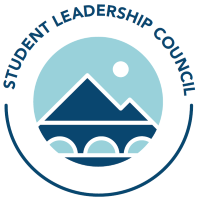Mental Health Inequity Found in Asian American College Students
Presenter Biography
I'm currently a Junior in the School of Public Health, but I'm also a part of the Pacific Islander and Asian American Studies Initiative. My focus is bringing more attention to the health inequity that Asian American face.
Institution
PSU
Program/Major
Health Services Administration
Degree
BS
Presentation Type
Poster
Start Date
4-4-2023 2:00 PM
End Date
4-4-2023 3:00 PM
Rights
© Copyright the author(s)
IN COPYRIGHT:
http://rightsstatements.org/vocab/InC/1.0/
This Item is protected by copyright and/or related rights. You are free to use this Item in any way that is permitted by the copyright and related rights legislation that applies to your use. For other uses you need to obtain permission from the rights-holder(s).
DISCLAIMER:
The purpose of this statement is to help the public understand how this Item may be used. When there is a (non-standard) License or contract that governs re-use of the associated Item, this statement only summarizes the effects of some of its terms. It is not a License, and should not be used to license your Work. To license your own Work, use a License offered at https://creativecommons.org/
Creative Commons License or Rights Statement
IN COPYRIGHT:
© Copyright the author(s)
https://rightsstatements.org/vocab/InC/1.0/
This Item is protected by copyright and/or related rights. You are free to use this Item in any way that is permitted by the copyright and related rights legislation that applies to your use. For other uses you need to obtain permission from the rights-holder(s).
Persistent Identifier
https://archives.pdx.edu/ds/psu/40213
Subjects
mental health, model minority, mental health taboo
Abstract
The Asian American or AA college student population is constantly growing with the American Community Survey citing in 2019 that an approximate 22.9 million AA youths entered college that year. Despite the growing population, they still face a huge inequity in mental health care in comparison to the White and other BIPOC groups, yet they’re also provided with the least amount of resources. Throughout using secondary research methods, I have found that the model minority myth and mental health taboo has been the two leading causes of why there’s a huge inequity gap. With the data I’ve found, I used the Social Determinants of Health method to form an effective intervention that would help close the inequity gap Asian American college students are facing.
Mental Health Inequity Found in Asian American College Students
The Asian American or AA college student population is constantly growing with the American Community Survey citing in 2019 that an approximate 22.9 million AA youths entered college that year. Despite the growing population, they still face a huge inequity in mental health care in comparison to the White and other BIPOC groups, yet they’re also provided with the least amount of resources. Throughout using secondary research methods, I have found that the model minority myth and mental health taboo has been the two leading causes of why there’s a huge inequity gap. With the data I’ve found, I used the Social Determinants of Health method to form an effective intervention that would help close the inequity gap Asian American college students are facing.


